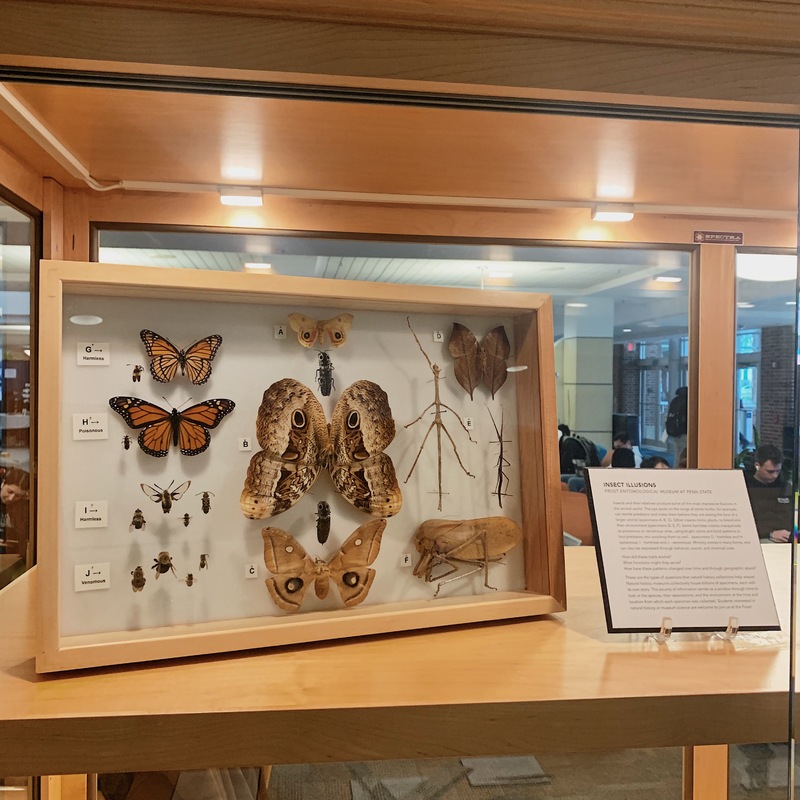Frost Entomological Museum object
Item
Title
Frost Entomological Museum object
Photo by
Julia Righter
Description
Insect Illusions
Insects and their relatives produce some of the most impressive illusions in the animal world. The eye spots on the wings of some moths, for example, can startle predators and make them believe they are seeing the face of a larger animal. Other insects mimic plants, to blend into their environment. Some harmless insects masquerade as poisonous or venomous ones, using bright colors and bold patterns to fool predators into avoiding them as well. Mimicry comes in many forms, and can also be expressed through behavior, sound, and chemical cues.
How did these traits evolve?
What functions might they serve?
How have these patterns changed over time and through geographic space?
These are the types of questions that natural history collections help answer. Natural history museums collectively house billions of specimens, each with its own story. This bounty of information serves as a window through time to look at the species, their associations, and the environment at the time and location from which each specimen was collected. Students interested in natural history or museum science are welcome to join us at the Frost!
Insects and their relatives produce some of the most impressive illusions in the animal world. The eye spots on the wings of some moths, for example, can startle predators and make them believe they are seeing the face of a larger animal. Other insects mimic plants, to blend into their environment. Some harmless insects masquerade as poisonous or venomous ones, using bright colors and bold patterns to fool predators into avoiding them as well. Mimicry comes in many forms, and can also be expressed through behavior, sound, and chemical cues.
How did these traits evolve?
What functions might they serve?
How have these patterns changed over time and through geographic space?
These are the types of questions that natural history collections help answer. Natural history museums collectively house billions of specimens, each with its own story. This bounty of information serves as a window through time to look at the species, their associations, and the environment at the time and location from which each specimen was collected. Students interested in natural history or museum science are welcome to join us at the Frost!
Source
Rights
This image is posted publicly for non-profit educational uses, excluding printed publication. Other uses may not be permitted.

